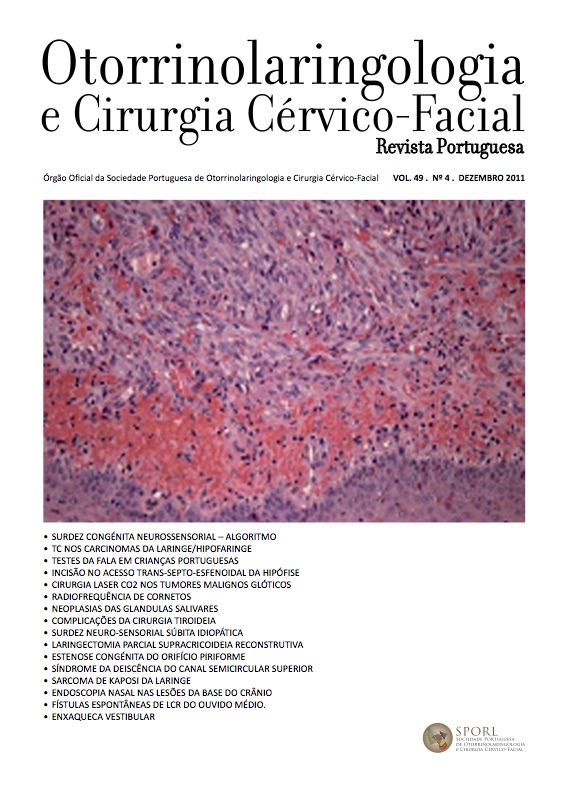Intranasal endoscopy diagnosing skull base pathology: A case of clivus chordoma
DOI:
https://doi.org/10.34631/sporl.202Keywords:
Endonasal endoscopic technique, Clivus, ChordomaAbstract
The endonasal endoscopic technique is widely used in diagnosis and treatment of multiple nasosinusal pathology, but also a viable alternative to the conventional biopsy approaches to the skull base. According to the previous literature, the success rates are comparable or even better than the neurosurgical approaches, with lower morbidity, when performed by skilled surgeons and with a careful pre-operatory study. This study presents a clinical case of a neoplastic lesion of the clivus, accessed endoscopically, which biopsy revealed a chordoma, the most frequent intrinsic tumor of this skull base area.
Downloads
References
Schlosser, R. J., Kennedy, D. W., Nasal endoscopy, capítulo 105 em Scott Brown’s Otorhinolaryngology, Head and Neck Surgery, Sétima
Edição, p. 1344-1354
Scholz, M. et al., Skull base approaches in neurosurgery, Head & Neck Oncology 2010, 2, p. 9-16
Jackler, R.K., Neurotologic skull base surgery, capítulo 65 em Lange, p. 865-868
Chugh, R. et al., Chordoma: the nonsarcoma primary bone tumor, The Oncologist, 2007; 12, p. 1344-1350
Erdem. E. et al., Comprehensive review of intracranial chordoma, Radiographics, 2003; 23, p. 995-1009
Harbour, J. W. et al., Clivus chordoma: a report of 12 recent cases and review of the literature, Skull Base Surgery, 1991;1, p. 200-206
McMaster, M.L. et al., Chordoma: incidence and survival patterns in the United States, 1973-1995. Cancer Causes Control 2001; 12, p.1-11
Eliashar, R. et al., Image guided navigation system—a new technology for complex endoscopic endonasal surgery, Postgrad Med
J, 2003;79, p. 686–690
Naokatsu, S. et al., Endoscopic endonasal pituitary and skull base surgery, Neurol Med Chir, 2010; 50, p. 756-764
Shahzada, K.A. et al., Clivus chordoma: is it enough to image the primary site?, Skull Base, 2010; 20, p. 111-113






